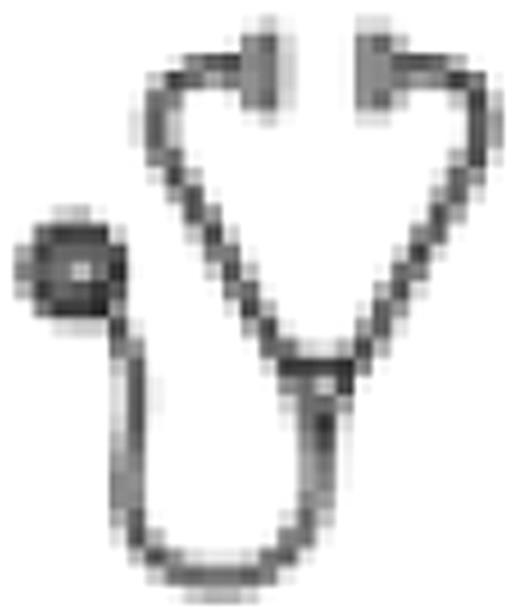Abstract
Abstract 699
Combination immunochemotherapy with fludarabine (F), cyclophosphamide (C) and rituximab (R) gave superior progression free and overall survival compared to FC in the German CLL8 Study. The median age in CLL8 was 61 years compared to a median age for overall CLL patients of 72 years. There is ongoing debate regarding the tolerability and safety of FCR in elderly patients. Arbitrary dose reductions are common practice. Oral FC is more convenient for many older patients.
Previously untreated patients with progressive CLL aged ≥65 were randomised to one of three treatment regimens FR5, FCR3 and FCR5 as follows: (i) F 24mg/m2 po D1-5 + R (375 mg/m2 C1, 500mg/m2 C2-6) iv D1 (FR5), (ii) F 24mg/m2 po and C 150mg/m2 po D1-3 + R iv D1 (FCR3) or (iii) F 24mg/m2 po + C 150mg/m2 po D1-5 + R iv D1 (FCR5), all given at monthly intervals for an intended 6 cycles. The dosage of FCR5 is equivalent to standard intravenous FCR in the CLL8 Study. Patients were administered their therapy arm with no dose reduction. Fludarabine dosing was reduced according to renal function by calculated GFR. Therapy was delayed by 2 weeks if there was any grade 3 or 4 toxicity. If this was unresolved after 2 weeks, patients were taken off study. If toxicity resolved to grade 2 or less, therapy proceeded.
Over half the planned patients (65 of 120) were recruited by 1 August, 2010 from 21 centres in Australia and New Zealand with the study having been open for 18 months. Median age is 72 (range 65–85) years. Binet stage at registration was progressive A – 11 (16.9%), B – 32 (49.2%) and C – 22 (33.8%). Randomisations are FR5 – 22, FCR3 – 22 and FCR5 – 21. FISH data is available on 50 patients: 25 with 13q-, 9 with 12+, 4 with 11q−, and 6 with 17p−. P53 functional analysis is available on 15 patients. Interim reasons for cessation of treatment, dose delay and clinical responses are shown in tables 1, 2 and 3 respectively for the total patient cohort. Cessations for reasons other than toxicity occurred in 7 patients: intercurrent illness (N=2) with acute myocardial infarction (AMI) and recurrent episodes of amnesia, and other reasons (N=5). Deaths were recorded for 2 patients due to infection and AMI.
| Reason for cessation of treatment . | Frequency . | Percent . |
|---|---|---|
| Completion of protocol treatment | 13 | 46.4% |
| Unresolved Grade 3/4 toxicity >2 weeks | 8 | 28.6% |
| Intercurrent illness | 2 | 7.1% |
| Other | 5 | 17.9% |
| Total | 28 | 100.0% |
| Reason for cessation of treatment . | Frequency . | Percent . |
|---|---|---|
| Completion of protocol treatment | 13 | 46.4% |
| Unresolved Grade 3/4 toxicity >2 weeks | 8 | 28.6% |
| Intercurrent illness | 2 | 7.1% |
| Other | 5 | 17.9% |
| Total | 28 | 100.0% |
| Dose delays during treatment . | Frequency . | Percent . |
|---|---|---|
| Yes | 30 | 61.2% |
| No | 19 | 38.8% |
| Total | 49 | 100.0% |
| Dose delays during treatment . | Frequency . | Percent . |
|---|---|---|
| Yes | 30 | 61.2% |
| No | 19 | 38.8% |
| Total | 49 | 100.0% |
| Reponses in patients who have completed treatment . | Interim staging after 3 cycles . | Initial clinical response after 6 cycles . | Final staging 2 months after completion . |
|---|---|---|---|
| Complete Remission | 13 | 19 | 11 |
| Nodular Partial Remission | 1 | 1 | 5 |
| Partial Remission | 27 | 9 | 10 |
| Stable Disease | 2 | 3 | 2 |
| Progressive Disease | 0 | 0 | 0 |
| Total | 43 | 32 | 28 |
| Reponses in patients who have completed treatment . | Interim staging after 3 cycles . | Initial clinical response after 6 cycles . | Final staging 2 months after completion . |
|---|---|---|---|
| Complete Remission | 13 | 19 | 11 |
| Nodular Partial Remission | 1 | 1 | 5 |
| Partial Remission | 27 | 9 | 10 |
| Stable Disease | 2 | 3 | 2 |
| Progressive Disease | 0 | 0 | 0 |
| Total | 43 | 32 | 28 |
Oral F(C)R therapy appears generally safe and well tolerated to date in CLL patients aged ≥65 years requiring first-line treatment. Using stringent stopping criteria with delay of 2 weeks for recovery of grade 3 or 4 toxicity but no dose reduction, about half the patients will stop early due to toxicity or intercurrent illness. Nevertheless, response rates are high. Accrual is ongoing.
Mulligan:Roche: Honoraria, Membership on an entity's Board of Directors or advisory committees; Bayer Schering, now Genzyme: Honoraria. Seymour:Roche: Consultancy, Honoraria, Membership on an entity's Board of Directors or advisory committees, Speakers Bureau.

This icon denotes an abstract that is clinically relevant.
Author notes
Asterisk with author names denotes non-ASH members.

This feature is available to Subscribers Only
Sign In or Create an Account Close Modal